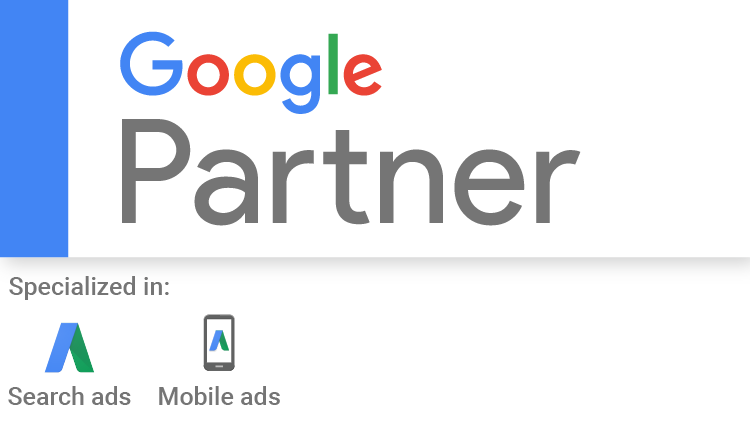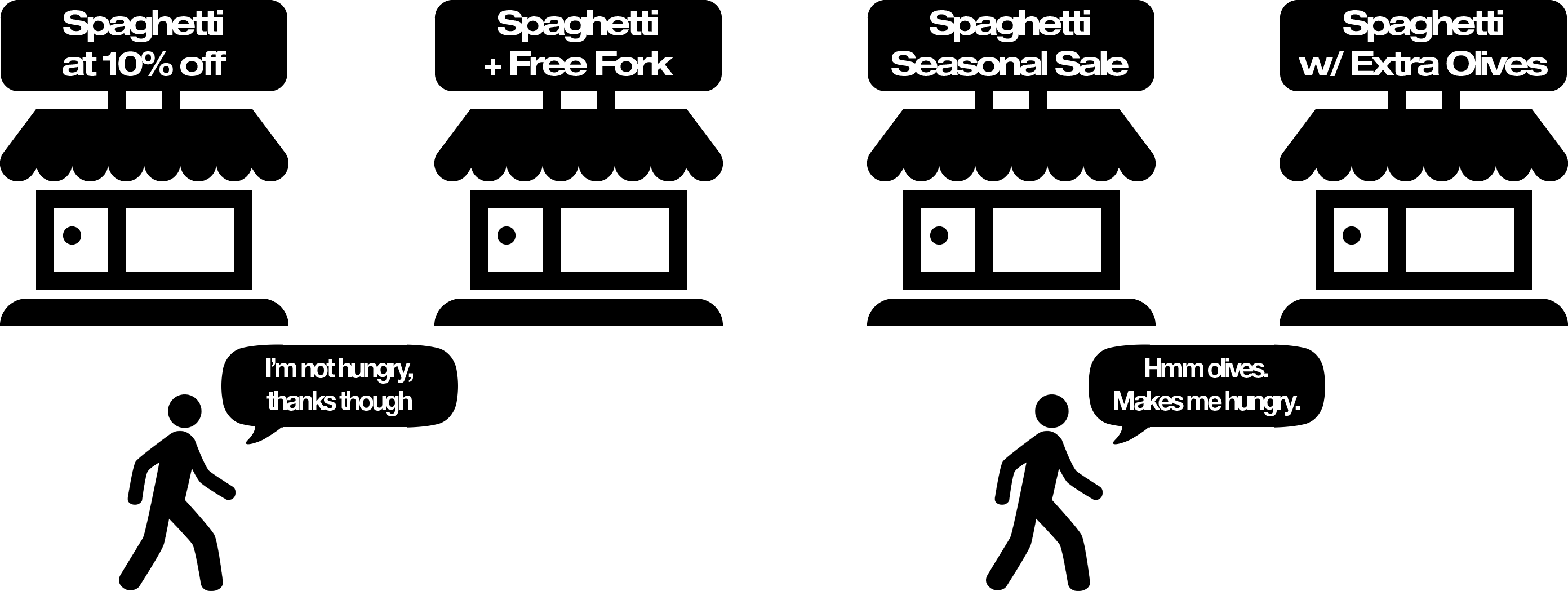Pushing and Pulling Success
What you’re reading is going to become a series on understanding Google’s advertising system AdWords. But not from the common tutorial perspective, as startups and entrepreneurs, engaged in a variety of activities, have little use for it – that is of course, they have three-to-four hours a day to spare. We’ll be concentrating on a different, more systematic approach that will provide context on the strategic pros and cons of using AdWords. We’ll be focusing on Search Campaigns in particular, as they are by far the most common, yet most misunderstood tool. But what’s the point? There’s so much information already available, tutorials by the hundreds. How will this article change the world?
Simple Reasons, Simple Answers
It won’t change the world. But if it changes your views, or at least provides you with an understanding, that’s already good enough. You see, we’ve been working with AdWords for many years now, and we found that most of the tutorials, articles on this subject are only more-or-less honest, and for that matter, useful.
More Honest Material
Consider study guides and exam binders directly from Google, for example. They are highly detailed and very specific, but let’s face it, they are useless for providing an overall perspective. That is, unless you want to dedicate a significant portion of your time to a single marketing tool, these just won’t cut it. And if you’re an entrepreneur busy keeping your head above the ground, you’re bound to fall into this category.
Less Honest Material
Then there’s the less honest learning material. Over the past years it’s become common business practice for agencies providing campaign management to serve tutorials and courses that teach you the nuisances of managing campaigns yourself – only to forget about the basics, so you’ll end up asking for their help anyway.
Wait a sec.. did we just say we build and manage campaigns just as well? What’s the difference? Well, what these articles won’t do is teach you to build campaigns yourself. What they will do however is give you insight on the bits of information most commonly omitted in other articles.
The Manager’s Role
But it’s not just the study material that counts. You, dear reader, are equally important. Think about yourself for a moment. Are you hard at work managing your business, engaged in multiple fields of work at once? So you are a…
“Jack-of-all-trades, Master of None,
Often better than a Master of one.”
— Traditional saying
…or is it? The answer is entirely up to you. Think about it. You are now seeking to expand your already vast skillset with one of the largest online advertising platforms. Is it really worth spending your valuable time learning the complete ins and outs of the system, or is learning about the most important aspects sufficient – and let someone else put everything else together. Maybe you can strive to become a true Master of All. However, this series will only focus on helping you understand the logic and dynamics of AdWords, so you can find its correct place in that business plan you have lined up. And I’m hopeful it can still provide some new bits of info valuable to the occasional Master of All.
Setting the Subject
This time, we will be talking about AdWords Search Campaigns, with some other tools, like Facebook Ads for comparison. So what exactly are search campaigns? Well, they look something like this:
They are essentially the paid listings that typically appear as the first four hits on a search result page. You have great control over what they appear for and what they appear as, along with factual, precise information on the number of impressions, clicks and other information we will tackle later.
Now, how does this fit into your business plan? What is its role? What is it good for and when is it useless?
About Pushing and Pulling
Let’s get down to business. Search ads, much like facebook ads, billboards, business cards and the ever so annoying cold calls are a form of marketing communication. When trying to understand these forms, or tools of communication, you should try and group them in some way. There are many dimensions to choose from, but for now, we will categorize these as push and pull tools.
Make your choice, but don’t get hit. The same applies to the door above and your choice for marketing communications tools.
The Basic Difference
The difference is fairly obvious. Push based communications tools are designed to – literally – push your message onto the unsuspecting person (or, more pragmatically, the potential customer). Most of the tools do exactly this. Ads on TV, billboards by the highway, that flag on your burger telling you to get extra fries at 10% off. It’s like saying “Hey, we now serve extra portions of spaghetti, care to take a look?”
Pull based tools are meant to pull a person with a pre-existing will to buy into your shop. The keyword here is ‘pre-existing’. This is more like saying “You seem to be looking for a wine glass. Let me show you our assortment of wine glasses.”
Of course, the sliding scale of annoyance is a dimension completely independent of the type of marketing tool. One would argue that pull-based tools are more subtle, but then again, remember how the waiters stand by the entrance of their restaurants (cafés, cantinas) at the beach resort, urging you to take a seat right here, right now?
Push Mediums in Practice
Imagine walking by a number of shops without an intention to buy anything. You will probably see a number of different offers, all meant to catch your attention. For example, let’s say you are walking by a number of fast food stalls, and for some awkward reason, they’re all selling spaghetti.
This is push marketing. Initially, there is no consumer-side demand – or to be more precise, none that we have information of – and so these tools are hard at work trying to convince your average joe to give in and buy your product.
Push marketing, therefore, is used to create and drive new demand, forging new customers from the gray mass of people. The online equivalents for push marketing techniques are, for example, Facebook Ads, the Google Display Network, In-Stream Video Ads on YouTube – and the list goes on.
There are a number of things to consider when using push marketing techniques:
- – When used online, they are good at reaching masses in a cost-effective manner
- – But they do not drive sales, and their reach-to-purchase conversion rates are low
- – Ideal for driving your brand, usually horrible for driving sales.
Pull Mediums in Practice
Now, let’s twist the aforementioned scenario a little. Let’s say that – oh joy – we can see into the minds of people, or at the very least filter them somehow and only show our message to those we pick based on their thoughts. Sure, this does sound crazy, but we will clear this up in a minute.
The main difference compared to push marketing here is that restaurant #4 knows that the potential customer is specifically looking for spaghetti bolognese. No matter what the other restaurants will offer, spaghetti bolognese will be the obvious winner, as that is what matches our customer’s specific demand the most. Of course, one could argue that this has more to do with the asymmetry of information availability, but the end result will be the same even if we assume that the other three restaurants have access to this very same information – but are simply lazy to alter their message accordingly. And as you will see, in terms of online advertising, especially AdWords, advertisers indeed are… lazy.
This is pull marketing. Notice that if you compare the two scenarios, in this case, we have a set, specific demand to begin with. Pull marketing works on this existing demand and builds on it – what you do, is raise your hand and volunteer to fulfill that demand as precisely as possible. Once again, notice that in this case, you are not driving to create new demand. You leverage existing demand. Pull marketing techniques are:
- – More effective at reach to purchase conversion rates
- – Are not effective for reaching masses, as cost per reach is typically much higher
- – Effective for driving sales, but has little to offer in terms of brand awareness
Implications for Google AdWords
As you might have guessed, AdWords search campaigns are a form of pull marketing communication. The paid listings on a Google search result page include four slots at the top of the page, and we are targeting these positions in an attempt to make our online store appear. We have very good control on what we appear for, and as you can see in our previous example, relevancy is of paramount importance. If we build our campaigns to take details like “spaghetti bolognese” into account, and not just display some common text for “spaghetti”, our relevancy will improve greatly. This is particularly effective at countering any promotional message others might have to offer.
But the most important implication here is not about relevancy. It is about demand, and how search campaigns do not create new demand, but leverage existing consumer needs.
Search campaigns, when done right, are exactly as effective as your products and your store in general.
This stems from the fact that we are working with pre-existing demand. If your restaurant has a positive image, your potential customers will stand a better chance of buying spaghetti bolognese from you if they are looking for just that. However, if your meat sauce is known to be bad, consumers will not buy their spaghetti from you, even if you are the most relevant to their needs. If you are driving new demand, you can get people to try something for novelty’s sake, but working with existing demand is different. In the latter case, your product, your prices and customer experience all have to be just the right level. AdWords search campaigns are excellent at selling your products and services if they are already sought after, but can do precious little to revive a dead product – this is because pulling in customers to your storefront is not enough by itself, for that is where you will need to convince them. And in online terms, your storefront is essentially your website or e-commerce store – which school of thought should lead you straight into the realm of UX specialists.




